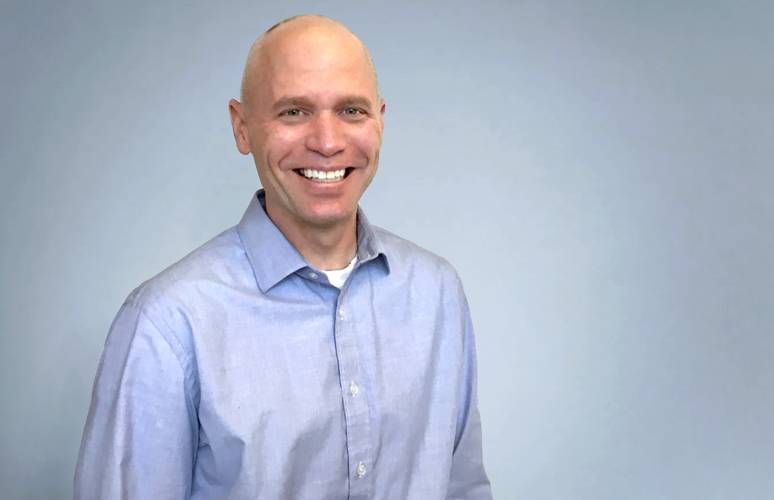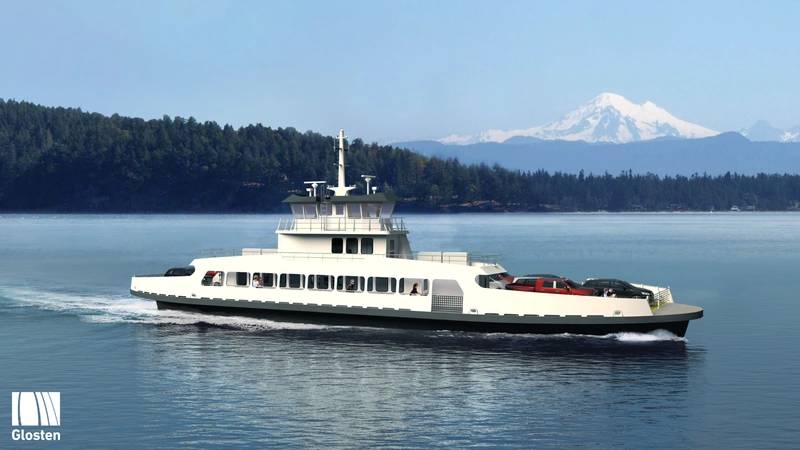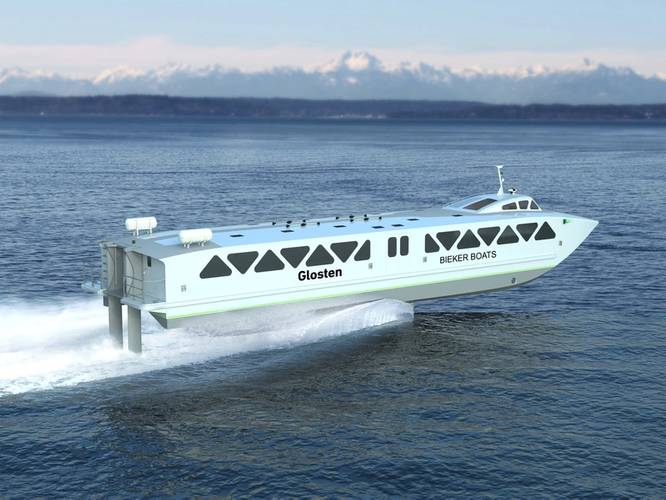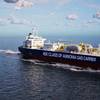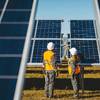PROFILE: Glosten is Meeting the Decarbonization Challenge, by Design
Naval architects and marine engineers sit on the front lines of the maritime industry’s battle toward decarbonization. Morgan Fanberg, President, Glosten, discusses the challenges and opportunities ahead.
- Put in context the challenge ahead for ship owners and ship designers to meet emission targets of 2050?
I started my career in 1998 and as a young marine engineer, the challenges that I faced were taking old boats and meeting SOLAS requirements, developing ship yard packages for modifications such as oily water separator upgrades (for example). So the challenges from my early career do not compare at all to the challenges that we’re facing with decarbonization and the IMO emission reduction goals.
- How is Glosten investing today to ensure that it is well-armed to meet the challenges ahead?
Shortly after I became president we developed a program to formalize our R&D, because we knew we needed to use some of our profits to invest in our future. This program helps us prioritize. One of the projects that we just approved is to develop our internal expertise on all decarbonization topics, as I want our entire engineering staff to be completely knowledgeable (on the topic for the benefit of our clients).
- From the vessel owners that you talk to, how high is decarbonization on their agenda today?
It really depends on the operator and the sector of the industry that they’re in. If you operate a passenger vessel on a route suitable for electrification, decarbonization is a priority. You are certainly looking at implementing battery technology into your fleet. If you’re an owner of an aged fleet with little capital, you’re just trying to keep up with maintenance, and decarbonization may only mean finding a way to reduce fuel consumption. I recently testified in front of Congress to get the federal government, through MARAD and the DOE, to start funding grant opportunities so operators and owners have the capital means to meet some of these challenges.
- As we push towards decarbonization, what do you see as the highest hurdle today?
First and foremost, the technology must be proven to be readily available and reliable. Once that has been accomplished, the hurdle will be cost. There’s no question about it. It must cost less to build and operate vessels with these new technologies, or we might not meet the IMO reduction goals. Specific examples of those hurdles are carbon neutral fuels like biodiesel. They’re going to need a subsidy to be the same or less cost; ammonia and hydrogen will require significant capital investment, both in propulsion plants and the distribution infrastructure.
- Do you see a single fuel, a single technology or technique that will go furthest fastest to help meet these emission reduction goals?
If only I had a crystal ball it would be amazing for Glosten and for me. That said, we are seeing some early winners in this race. The two things that need to happen for a fuel or technology to win: First, the fuel needs to be produced at scale from a green source of energy without a huge premium over diesel. Hydrogen and ammonia are widely available today as industrial chemicals with a distribution network in place, but neither are produced at scale from green sources of energy. There are a number of green hydrogen pilot projects planned right now, so it’s moving in the right direction. Second, the on-vessel propulsion systems need to be commercially available and proven. Commercial fuel cells, hydrogen and ammonia fuel combustion engines are in development, but it’s going to take some time.
So right now there is no clear winner.
- Can you discuss industry projects Glosten is engaged in that are aiming to jointly develop a solution?
Glosten is a founding member of the nonprofit organization called Washington Maritime Blue. Its goal is to connect maritime businesses to progress the industry through different projects. Our all-electric foil ferry project is a Washington Maritime Blue joint innovation project (allowing us to build partnerships with many local engineers, port authorities, vendors, manufacturers and regulators.
- We recently reported on an all-electric ferry design for Skagit County Public Works. Can you give us an overview of the project?
We started working with Skagit County Public Works in 2017, initially studying its future transportation system needs, as its existing ferry is 40 years old and due for replacement. Because the route is only a half mile from Anacortes to Guemes Island, it’s a perfect environment and scenario for an all-electric ferry. After delays in securing funding, the project picked back up in 2019, and earlier this year Skagit approved our preliminary design of a double-ended ferry that can accommodate 28 cars. This will be an all-electric ferry with redundant battery banks, a split main DC bus. There’s also a backup generator, so in the event that there’s an emergency on the island and we need to get emergency vehicles back and forth, they’re not going to have the battery capacity for that. So we have this backup generator for above peak demand. The large tidal ranges have created some interesting challenges to integrate the ship charging equipment, but we’ve developed a couple different concepts (for which) we have submitted environmental permit applications. Also, finally, because it’s important for this project to have a single integrator for the electrical systems on the ship and the shore, we have supported Skagit with the release of the electrical integrator RFP. So that RFP is on the streets right now. A selection will be probably made in October, and then we can start finishing up the contract design and then proceed to the construction phase.
- Are there any other recent additional projects that illustrate how Glosten is engaged in this decarbonization challenge?
Yes, absolutely. In addition to supporting clients on fuel and propulsion plants, we’re also active in the green energy sector, specifically the wind industry where our PelaStar floating wind turbine platform is gaining attention. We recently partnered with General Electric on the ARPA-E ATLANTIS Project. GE designed and developed advanced controls to support a 12MW wind turbine based on our PelaStar platform. This resulted in the design of a lighter, lightweight, floating turbine that will significantly reduce the cost of energy. Hopefully with that project and some other things we have in the works, we’re really hopeful that we will see floating wind turbines mounted on our PelaStar platform in the near future.
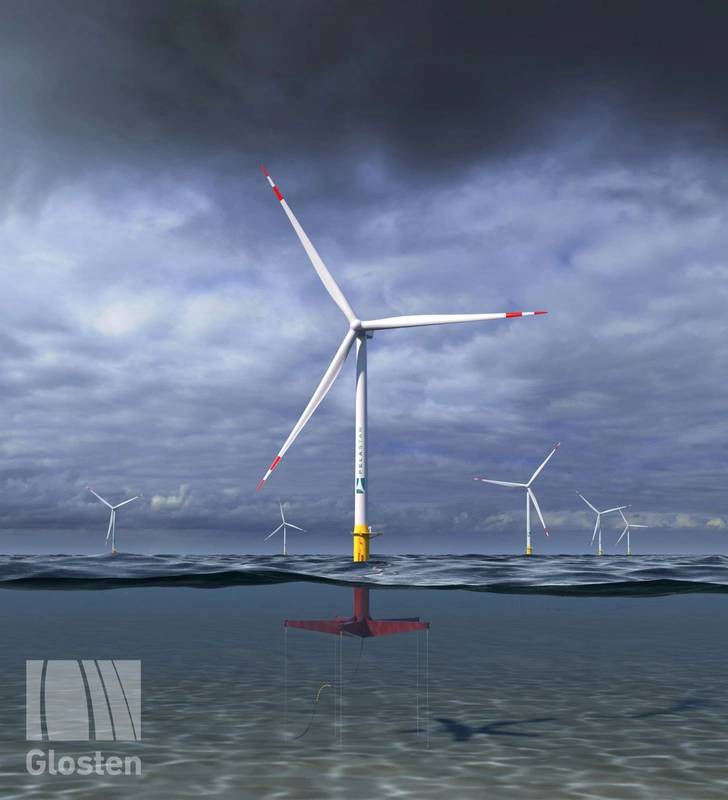 PelaStar Floating Wind Turbine Foundation. Image courtesy Glosten
PelaStar Floating Wind Turbine Foundation. Image courtesy Glosten







